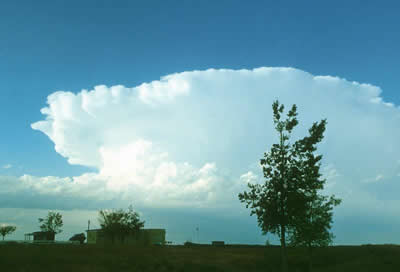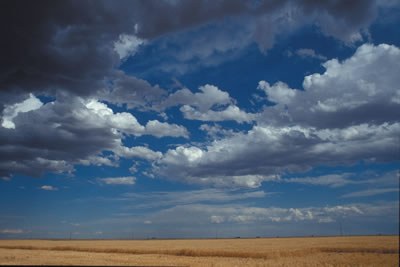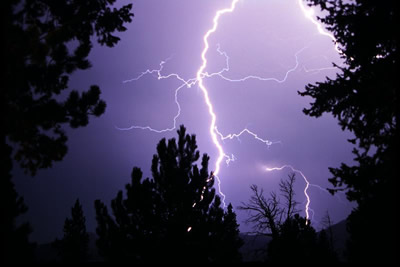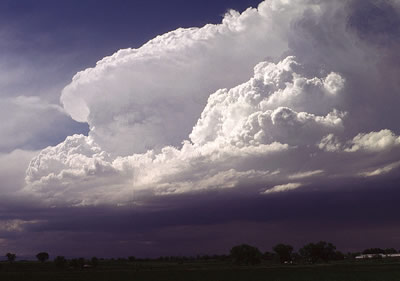Click on image for full size
Windows to the Universe Original
Thunderstorm Formation
Most thunderstorms form by a cycle that has three stages: the cumulus stage, mature stage, and dissipating stage.
Cumulus Stage
The sun heats the Earth's surface during the day. The heat on the surface and warms the air around it. Since warm air is lighter than cool air, it starts to rise (known as an updraft). If the air is moist, then the warm air condenses into a cumulus cloud. The cloud will continue to grow as long as warm air below it continues to rise.
Mature Stage
When the cumulus cloud becomes very large, the water in it becomes large and heavy. Raindrops start to fall through the cloud when the rising air can no longer hold them up. Meanwhile, cool dry air starts to enter the cloud. Because cool air is heavier than warm air, it starts to descend in the cloud (known as a downdraft). The downdraft pulls the heavy water downward, making rain.
This cloud has become a cumulonimbus cloud because it has an updraft, a downdraft, and rain. Thunder and lightning start to occur, as well as heavy rain. The cumulonimbus is now a thunderstorm cell.
Dissipating Stage
After about 30 minutes, the thunderstorm begins to dissipate. This occurs when the downdrafts in the cloud begins to dominate over the updraft. Since warm moist air can no longer rise, cloud droplets can no longer form. The storm dies out with light rain as the cloud disappears from bottom to top.
The whole process takes about one hour for an ordinary thunderstorm. Supercell thunderstorms are much larger, more powerful, and last for several hours.














